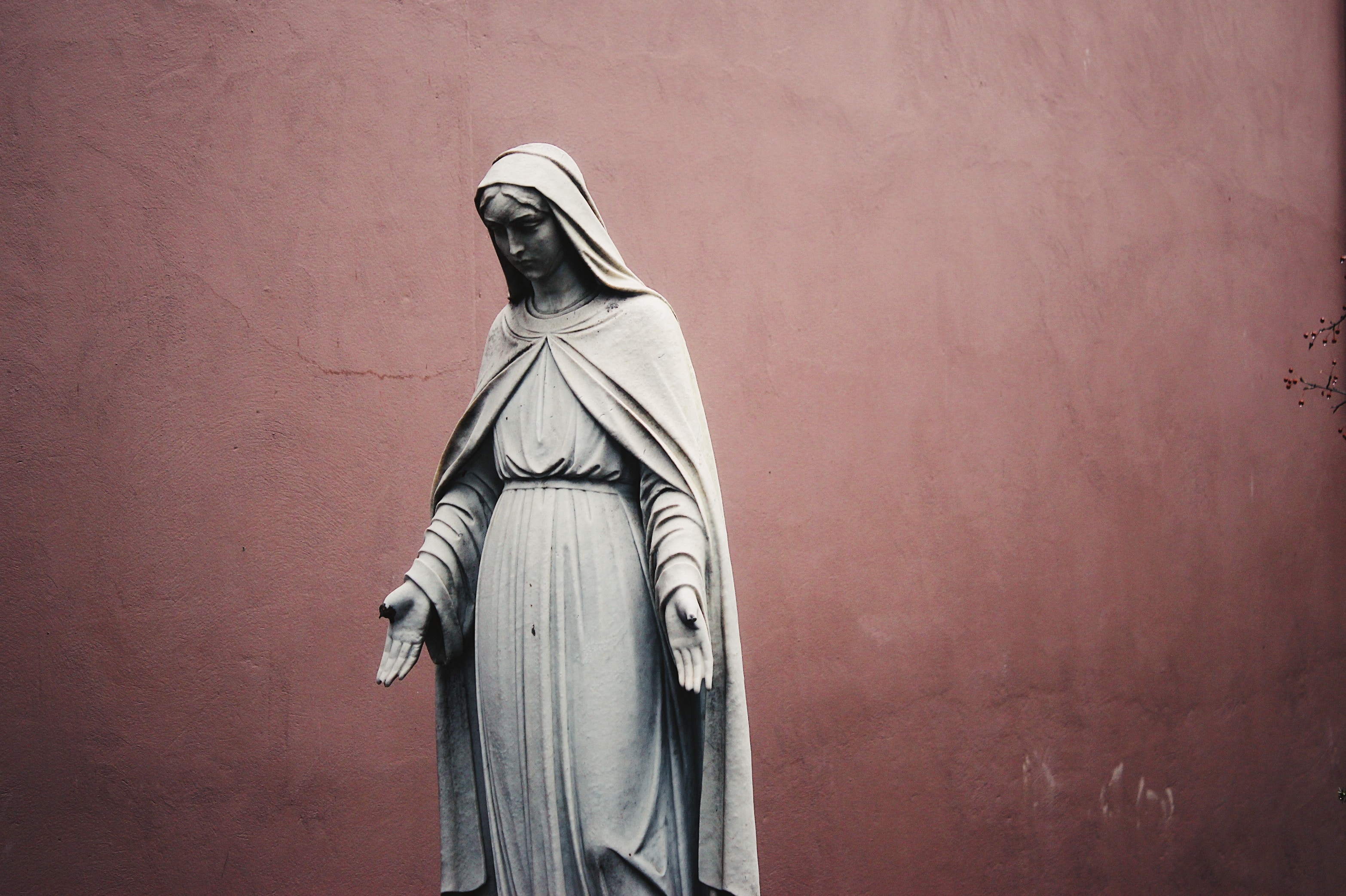The English Decadent poets of the late nineteenth century were influenced heavily by French writers, especially Charles Baudelaire, as was mentioned by T.S. Elliot in his essay, “Baudelaire” (155). The French Catholicism displayed in Fleurs du Mal differs from the reverent and didactic English Catholicism evident in poems from Ernest Dowson or Lionel Johnson. It is tempting to superficially compare French and English Catholicism within the Decadence movement, but the religious views of these writers are more complex than their country of origin might imply. Joris-Karl Huysmans, for example, complicates the comparison significantly by holding an intermediate stance. The contrasts amongst Decadent religious views are not black and white, but a spectrum of grays. Although religious tones vary between these writers, however, they all reinforce the element of “inversion” found in Decadence writing.
“Inversion” is a common thread of the Decadence, and is commonly expressed in the form of perversion and deviation. The attraction to artifice, such as Huysmans’ trains in Against Nature (23-24), or Aubrey Beardsley’s “powders, paints, and subtle dyes” (Rodensky 209), is an inversion of naturalistic beauty. Baudelaire’s Satanism, from poems like “The Litany of Satan” or “To a Madonna,” is a direct perversion of Catholicism. These are obvious forms of inversion, but the theme is carried more subtly in other works, including the English.
If Baudelaire fully embraces his perversion of Christianity, Huysmans’ writings live in paradox with it. In Against Nature, the main character, Des Esseintes, is a studious scholar of religious philosophy, but he lacks faith. Des Esseintes appreciates pessimism (77-79), but he later disavows this theory, realizing the necessity for hope (204). In Christianity, dependence on God is foundational, but Des Esseintes seeks to defy dependence and overcome his need for faith. He renovates his bedroom into an oxymoronic luxurious monastery cell, and secularly maintains the ritual of religious life without God (61-63). Against Nature’s religious points are not as outrightly defiant as Baudelaire’s, but his bouts of atheism are inversions against Catholicism.
The English embrace Catholicism in a different manner than the French, but they still maintain an element of inversion. In the late 1800’s the English were Anglican, not Catholic. English poets of the late Decadence enjoyed standing in opposition to society’s Anglicanism. To embrace Catholicism was to subtly subvert the predominant religion of their country. Not only did the Catholic faith allow for extravagance, but it provided a means of subtle rebellion.
Lionel Johnson’s poem “To a Passionist” (Rodensky 118) shows an intense appreciation for the Passionist Catholic order, and highlights his love for the ritualistic beauty found in Catholicism. Deviance, at first, seems to be lacking in this poem, and many of Johnson’s writings are almost religious poetry. “To a Passionate,” however, is narrated from the perspective of an outsider. He writes: “Thou [Passionists] pleadest an eternal sorrow: we / Praise the still changing beauty of this earth.” This juxtaposition of “you and us” highlights the disparity between the two. His writing of sinful desire in “The Dark Angel” (119) confutes the religious fervor of “To a Passionist.” This contradiction is an indirect inversion. In admiring the church from afar, Johnson accentuates the world and reinforces the world’s lack of redemption.
Ernest Dowson’s “Nuns of Perpetual Adoration” (Rodensky 87) and “Carthusians” (106) reflect a similar juxtaposition of contradicting ideas. These poems are wistful writings about nuns and monks finding rest and eternity through their vows of silence. In “Carthusians,” Dowson is entranced by the thought of trading “the world’s foolish noise” for “sacred silence,” and he elevates the monks: “Though the world fall apart, surely ye shall prevail.” The same “you and us” strategy can be found here, as he champions the eremites for obtaining something that his narrators will never have. “Man’s weary laughter and sick despair” is destitute against the nuns’ “impenetrable gate.” Dowson’s poetry detaches the world from the possibility of salvation. This detached, helpless viewpoint on the church removes its substance.
Huysmans’ Against Nature concludes with a concession to faith, Catholicism winning out against atheism and pessimism. Baudelaire’s obsession with Satanism emphasizes the need for Christianity, rather than a sincere Satanism, as Eliot states: “Satanism itself, so far as not merely an affectation, was an attempt to get into Christianity by the back door” (157). Although these writings may be a surrender to Christianity at first read, these writers are still considered Decadent and deviant. The Bible says, “For God did not send his Son into the world to condemn the world, but to save the world…” (New International Version, John 3:17). By making the church seem unobtainable and aloof, Dowson and Johnson invert the true nature and purpose of the church. They see and appreciate the artifice, but don’t understand the substance. By making faith into something unobtainable and hollow, they invert the true purpose of Christ, and assume their place among the deviant Decadence.
Works Cited
- Baudelaire, Charles. Fluers Du Mal, 1861, fleursdumal.org/.
- The Bible. New International Version. Biblica, 2011. Web. 16 Feb. 2017.
- Elliot, T. S. “Baudelaire.” The Complete Prose of T.S. Eliot: The Critical Edition. Baltimore: Johns Hopkins UP, 2015. 155-67. Project MUSE. Web. 14 Feb. 2017.
- Griffiths, Richard. The Pen and the Cross: Catholicism and English Literature, 1850 – 2000. London: Continuum, 2010. Print.
- Hanson, Ellis. Decadence and Catholicism. Cambridge, MA: Harvard UP, 1998. Print.
- Huysmans, J.-K. Against Nature. Edited by Patrick McGuinness, Harmondsworth, Penguin Books, 2003.
- Rodensky, Lisa, ed. Decadent Poetry from Wilde to Naidu. New York, New York: Penguin Group (USA), 2006. Print.
- Sutton, Timothy J. Catholic Modernists, English Nationalists. Newark: U of Delaware, 2010. Print.

